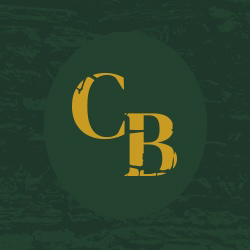|
I have started painting in earnest for the first time in my life, even though I have been learning and teaching it for decades. That is to say, I have begun to find a reason to paint. A painting doesn't just carry the trace of a subject, of one type of matter. It is a trace of both the subject matter and the human maker, who leaves a trace of themselves in this mutable material*. It is their gestures or lack of them, they leave visible in the work. In my painting practice, by focusing on certain sites, I am observing not only what the light makes of these sites, but what I, the maker, makes of them.
If the aim is to spotlight this subjective response as well as the subject matter, selecting a site for the degree to which it triggers a heightened response or not, becomes relevant. I've been studying the life and works of J W M Turner for many years, an artist who was also markedly selective about the environments he worked in, choosing sites of extreme weather, human drama and/or industrial upheaval. Through oil paint, and energetic gestural traces, he foregrounded his subjective response to these conditions within his work. Most recently, I have taken my painting to a sequence of three sites in Cumbria and Northumbria... Firstly, Hodge Close in Cumbria, a remote slate quarry originally dug out to 100metres into the ground, with a network of tunnels which became more uneconomical to mine as the danger increased. It is now flooded to 50 metres depth and is used as a renowned extreme playground for divers and climbers. The cave in which I worked can only be accessed through a scramble up and down a 100-metre boulder field, in an unflooded section of the quarry. There is no phone signal for many miles. The third site was the Baltic 39's first floor gallery space during installation week - a frenetic and risky space in time, in the sense of impending deadline and the attending performative aspects. I had learnt that Turner had done exactly this same thing during varnishing days at the Royal Academy. He would place down an impossible amount of detail into his painting in the days before a show.** Sandwiched between the two was a middle site, the cotton-wool cosiness of my home studio. What this rollercoaster of sites gave me, was an opportunity to play with my states of being, tweaking the level of real, constructed or imagined jeopardy to see how this affected my perceptions and acts of interpretation. I have a hunch that there is a certain restless type (or aspect) of learning that is only awakened when there is an anticipation of difficulty or burden, of a social, emotional or physical nature. In these moments, I believe an aesthetic is revealed in a perceived site of risk. People talk of a beauty in the manner in which an endeavour comes together; of the lines, colours and shapes of its ingredients: surroundings; active bodies, human and non-human; and deep social exchange that nobody anticipates until it unfolds. As the viewer enters the presence of my painting, I wish for them to become aware of this duel aspect of matter, the subject and the state of being of the maker. I wish to tell the story of how our perception shifts just as much as the light shifts across different landscapes. I choose oil paint as it seems to share synergies with the shifting energies of both light and human emotion. I can make it shine, draw the eye, or be dull, disappear, slowly melt away. This isn't just about painting as an expression of a special point of view or way of being. It is more about observing how these states alter according to situation, and could give us new knowledge to reflect upon, both of our exterior and interior worlds, and how they work together. *The art scholar Isabelle Graw, elucidates beautifully on this. **The Tate Conservation team have deduced this from their forensic investigations, validating the mythology of magic and genius that has always shrouded this aspect to Turner's methodology.
0 Comments
Leave a Reply. |
Celia BurbushPursuing an understanding of what we need to exist in the world: how do we connect with others (and the wider world and its objects), what is our language. Archives
April 2023
Categories |
- Home
-
WORKS
- Maryport in Painting, 2023
- Co-research with Kirkgate communities, 2022
- story of we 2022
- Journey Portraits, 2022
- Light trails 2021
- In Open Spaces 2021
- Make it Now
- Lockdown portraits 2020
- How a Painting Speaks, 2018
- These Four Walls 2017
- Home is where the heart is 2017
- Dreaming of home 2016
- Life of a House, 2017
- Dialogue with E numbers, 2014
- Hour of the Star
- Film Archive
- News
- ABOUT

 RSS Feed
RSS Feed